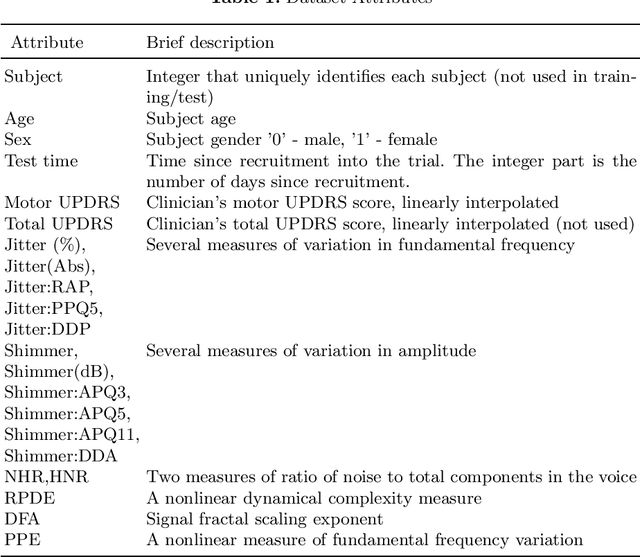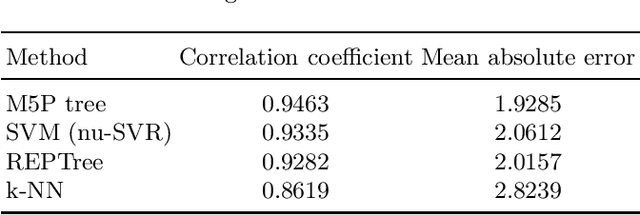Amy Giuntini
A Comparative Study of Machine Learning Models for Tabular Data Through Challenge of Monitoring Parkinson's Disease Progression Using Voice Recordings
May 27, 2020



Abstract:People with Parkinson's disease must be regularly monitored by their physician to observe how the disease is progressing and potentially adjust treatment plans to mitigate the symptoms. Monitoring the progression of the disease through a voice recording captured by the patient at their own home can make the process faster and less stressful. Using a dataset of voice recordings of 42 people with early-stage Parkinson's disease over a time span of 6 months, we applied multiple machine learning techniques to find a correlation between the voice recording and the patient's motor UPDRS score. We approached this problem using a multitude of both regression and classification techniques. Much of this paper is dedicated to mapping the voice data to motor UPDRS scores using regression techniques in order to obtain a more precise value for unknown instances. Through this comparative study of variant machine learning methods, we realized some old machine learning methods like trees outperform cutting edge deep learning models on numerous tabular datasets.
 Add to Chrome
Add to Chrome Add to Firefox
Add to Firefox Add to Edge
Add to Edge